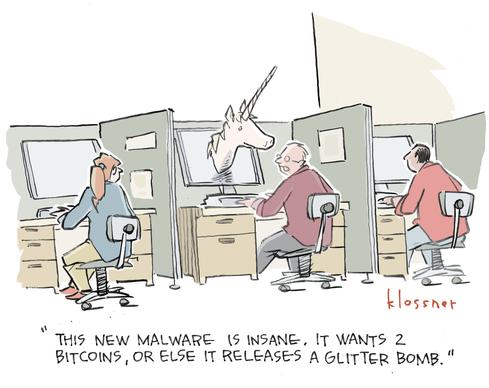Manafort, Stone, Trump, Papadopoulos, Kushner, Mueller, Russia: All the tech angles in one place
Analysis Where to begin?
Former Trump foreign policy advisor George Papadopoulos – no, not that one – has been turned by ex-FBI director Robert Mueller as part of the latter’s investigation into Trump campaign team members. Mueller is probing allegations of obstruction of justice, money laundering and other financial crimes, and collusion with Russian government agents seeking to meddle with last year’s US presidential election.
Papadopoulos has been assisting Mueller’s special inquiry for several months, but word of this cooperation only emerged today when his guilty plea to making false statements to the FBI was unsealed.
Coincidentally, Trump’s former campaign manager Paul Manafort surrendered himself this morning to Mueller at his nearest FBI office, as requested, to answer allegations ranging from making false statements to acting as a foreign agent.
Ex-Trump campaign official Rick Gates, also accused of conspiracy and money laundering, handed himself in today, too. The indictment against the pair is here, and both deny any wrongdoing.
Among the wealth of details in Papadopoulos’ 14-page statement [PDF] is the fact that he used Facebook Messenger and Skype to communicate with a Russian government agent, called “the Professor,” who promised to provide damaging information on the Clinton campaign. Emails, no less.
“This isn’t like he [the Professor]’s messaging me while I’m in April with Trump,” Papadopoulos told the FBI. “I wasn’t even on the Trump team.” Except he was on the team in April 2016. The Feds noted in their court paperwork: “Defendant PAPADOPOULOS met the Professor for the first time on or about March 14, 2016, after defendant PAPADOPOULOS had already learned he would be a foreign policy advisor for the Campaign; the Professor showed interest in defendant PAPADOPOULOS only after learning of his role.”
And then there is extensive evidence – confirmed by Papadopoulos – that he acted as a go-between for the Trump campaign and the Russian government, including being supplied with damaging information on the Clinton campaign.
There are also emails from other Trump campaign staff – so far unnamed – that show explicit efforts to work with Russians in gathering damaging information on the real-estate tycoon’s political rival. In other words, efforts to engage a foreign power to swing a US presidential election.
But let’s take a quick look at Facebook.
For one, using Facebook to carry out highly dubious and potentially illegal activity is not a good idea. This is a social network that periodically changes account settings to keep up the pretense that it’s not gathering and selling every snippet of information it can get out of you. Anything you say on Facebook may go straight down a pipe to the NSA and a database searchable by the FBI. It’s called Section 702.
Papadopoulos is obviously not a man well versed in spy craft. Something that becomes more apparent when it’s revealed the day after he was pulled in for questioning, he deleted his entire Facebook account and started a new one. He also tried changing his phone number to sidestep the Feds.
You can just imagine Mueller’s team at their morning meeting: so how did the Papadopoulos interview go yesterday? Well, this morning he deleted his Facebook account. Great, now we know where to look.
Deactivated
Under the heading “Events Following PAPADOPOULOS’s January 27, 2017 Interview with the FBI” in the statement, this is relayed as follows: “The FBI interviewed defendant PAPADOPOULOS again on February 16, 2017. His counsel was present for the interview. During the interview, defendant PAPADOPOULOS reiterated his purported willingness to cooperate with the FBI’s investigation.

Trump lieutenants ‘use private email’ for govt work… but who’d make a big deal out of that?
“The next day, on or about February 17, 2017, defendant PAPADOPOULOS deactivated his Facebook account, which he had maintained since approximately August 2005 and which contained information about communications he had with the Professor and the Russian MFA Connection. Shortly after he deactivated his account, PAPADOPOULOS created a new Facebook account that did not contain the communications with the Professor and the Russian MFA Connection.”
Oh dear. It didn’t help either that Papadopoulous’ Facebook posts undermined numerous parts of his story. Papadopoulos told federal investigators in January this year he had met the Russian agents before joining the Trump campaign. Unfortunately, what he actually wrote on Facebook somewhat undermined his own account. Hoisted by his own petard, as they say.
Which leads us to the social medium of choice of the current US President: Twitter.
This morning, Trump’s son-in-law – and the man who we have no doubt will succeed in his task of creating peace in the Middle East – Jared Kushner, decided now was the best time to delete every single one of his tweets.
The timing is not in any way suspicious. And it has nothing to do with the fact that Papadopoulos’ social media postings were used to undermine his own account of events. Kushner has nothing to hide, not even about that meeting with the Russian agents that was about adopting babies and nothing else, certainly not the presentation that the Russian government had evidence that one of the Clinton campaign’s backers was a tax evader.
It also has nothing to do with the meetings that Kushner keeps remembering he held with Russians in revised security clearance forms.
Stone cold
As well as losing Kushner’s body of Twitter knowledge and insight (which, of course, the FBI will still have access to), we also lost another Trump confidante: Roger Stone.
Even Roger Stone doesn’t like Roger Stone, but it seems he finally crossed the line this weekend in a series of personally abusive tweets aimed at journalists reporting on the Mueller-Russia probe, and has been permanently banned from the website, joining such luminaries as Milo Yiannopoulos and Martin Shkreli.
CNN host Don Lemon “must be confronted, humiliated, mocked and punished,” Stone guffed on Twitter before being barred from the milliblogging service. Conservative pundit Bill Kristol was #porky and “pilling on the pounds.” CNN host Jack Tapper “must be held accountable for his lies and very severely punished.” And so on.
Of course, Stone took the opportunity of again being highlighted as a dreadful human being to try to get himself talked about. “This is just part and parcel of the tech left’s effort to silence conservative voices,” he blathered and then launched a campaign to get himself reinstated while also promoting a movie all about himself. And so on.
Which of course leads to Trump himself.
‘Critical’
“Today’s indictments against Mr Manafort, Mr Gates and Mr Papadopoulos are stark reminders of how the special counsel’s investigation is critical to the rule of law and our national security,” US Senator Ron Wyden (D-OR) told El Reg in a statement.
“The allegations against Mr Papadopolous come after previously confirmed ties between the Trump campaign and the Russians, and raise more questions about which campaign officials may have encouraged the expansion of these connections. The indictment against Mr Manafort and Mr. Gates confirm the importance of following illicit money trails wherever they may lead, including to pro-Russian Ukranian interests.
“Each of these allegations should be the subject of thorough investigation by Congress as well as the special counsel. Finally, the tax evasion and money laundering charges against Mr Manafort are a reminder that Donald Trump, in contravention of decades of bipartisan practice, still has not released his own taxes.”
The epitome of the man who can’t sit on a train without calling someone to tell them they’re on a train. Who can’t eat a hamburger without tweeting “I am NOT eating a hamburger.” The hulking id with the irrepressible ego.
Well, Trump turned to Twitter to confirm everything that everyone was saying about him – only he put the name “Hillary” in front of it all because that’s how deception works. “Never seen such Republican ANGER UNITY as I have concerning the lack of investigation on Clinton…”
“There is so much GUILT by Democrats/Clinton, and now the facts are pouring out. DO SOMETHING!“
“…Also, there is NO COLLUSION!“
And so on.
Holding down the ‘Fort
But at the center of all the discussion is Paul Manafort. His Twitter account is still there, although it’s not been used since December last year and he only set it up when he joined the Trump campaign. Manafort doesn’t seem to have a Facebook profile to delete. But what he does have is an indictment for a dozen allegations, ranging from money laundering to filing false reports, to false statements, to acting as an agent for a foreign principal, to “conspiracy against the United States.” None of which sound good.
And just to add a cherry to the top, Robert Mueller has asked for forfeiture on Manafort’s assets, including his house in the Hamptons (worth about $8m), his Brooklyn house ($4.5m) and his New York apartment ($3m) – which, it turns out, he placed on Airbnb and was charging thousands of dollars a week to rent out.
The homes were bought from the proceeds of money laundering, the indictment claims – which, surprisingly, is not a new claim. The Treasury Department in August said it was looking into all-cash purchases of New York real estate for possible money laundering.
When it comes to technology and social media is of course the man behind the entire investigation, Robert Mueller, who doesn’t give one iota of a shit about the swirling social media yelling that passes for modern political debate.
Twitter, Facebook, Skype: they are all wonderful sources of evidence. And today we have seen the first 45 pages of that evidence. More are sure to come. ®
Sponsored:
The Joy and Pain of Buying IT – Have Your Say
Article source: http://go.theregister.com/feed/www.theregister.co.uk/2017/10/30/manafort_stone_trump_papadopoulos_kushner_mueller_russia/







